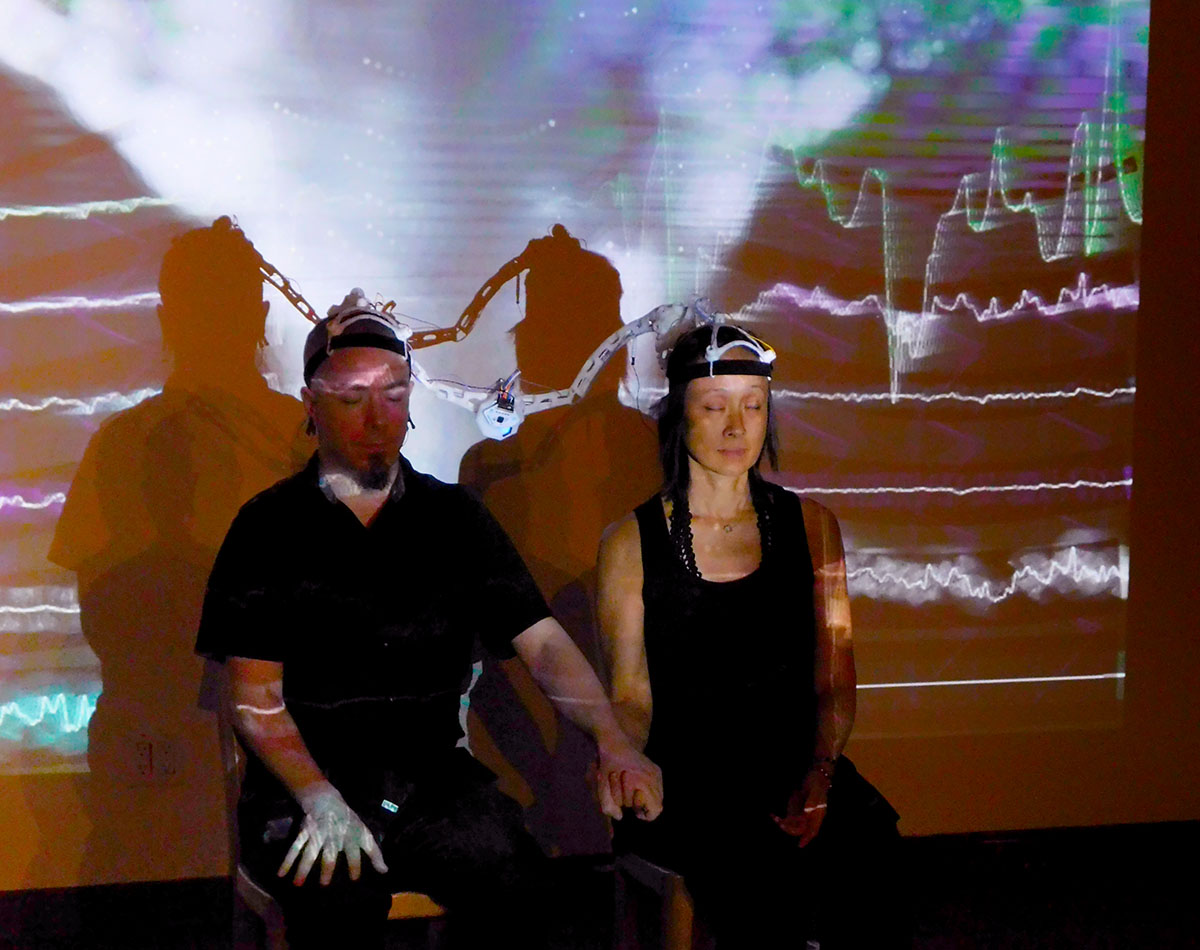Autodesk Redshift writes about Dual Brains performance at Spring Break Art Show 2018.
Autodesk Redshift wrote, “In a quiet performance space, artist Eva Lee and designer Aaron Trocola face about 70 spectators, eyes closed. They are silent, but the audience witnesses them emitting brainwaves. Lee and Trocola are neurally linked, wearing Trocola’s custom 3D-printed headset, its eight electrodes monitoring both their neural patterns as well as their heartbeats. A large cable connects them, recalling fantastical movies in which characters swap bodies.
The audience is experiencing Dual Brains—not a scientific experiment, but a performance-art piece Lee first conceived in 2016. For all its high-tech trappings, the work grew from a series of drawings with a deeply human theme.
“I’m most interested in how humans express empathy toward one another,” Lee says. “About our neural connectedness and how we choose, with our individual will, to help each other.”
Lee and Trocola are in the vanguard of artists who use brain-computer interface (BCI) technology. Also called “neural control interfaces,” BCIs create a communication pathway between a wired brain and an external sensor device. In this case, amplified brainwaves and technology generate artistic experiences that connect with audiences on both intellectual and emotional levels…” Read article here.
